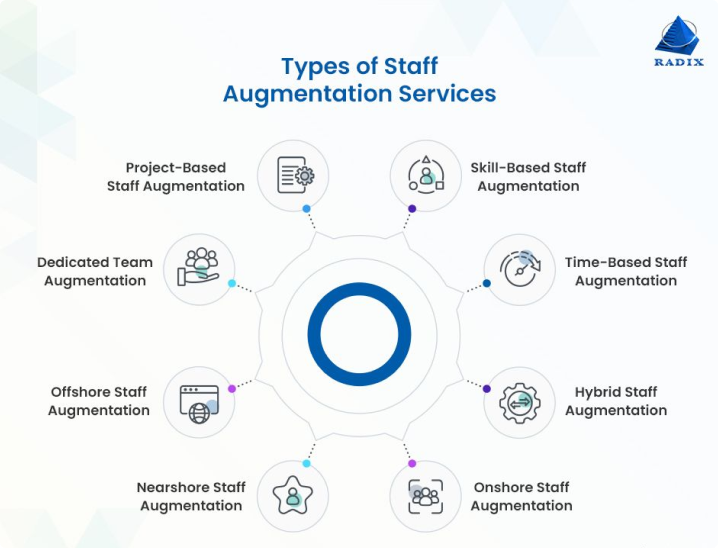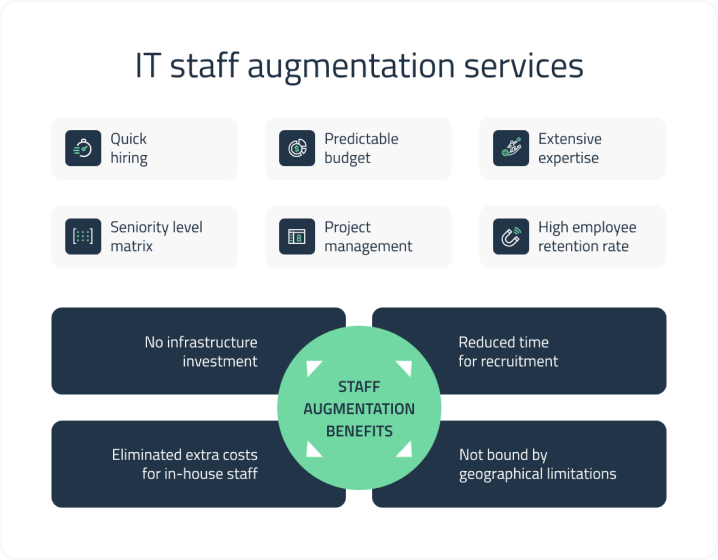What Is Staff Augmentation? How Can It Benefit Your Team?

Staff augmentation is a flexible outsourcing strategy that allows companies to add specialized talent to their teams as needed. Rather than hiring permanent employees, businesses can temporarily “augment” their staff with skilled professionals from an external provider to fill gaps, complete projects, or support ongoing tasks. This model enables companies to access talent quickly, optimize costs, and stay competitive in a fast-changing business environment.
Let’s explore how staff augmentation works, its benefits, and the situations where it can be most advantageous for a team.
Understanding Staff Augmentation
In a staff augmentation model, companies partner with third-party vendors to access qualified talent on a temporary basis. The augmented staff works under the company’s management and integrates with the team, following the company’s processes, culture, and objectives. This approach offers greater control and flexibility over staffing compared to other outsourcing models.
Unlike other types of outsourcing, where project management and decision-making are handled externally, staff augmentation allows the client to maintain full oversight and direction of the work being done. This setup is particularly useful for companies with specific project requirements, temporary workload increases, or gaps in specialized skills.

Key Benefits of Staff Augmentation
Staff augmentation offers several benefits for organizations seeking agile, flexible, and cost-effective staffing solutions. Here’s a look at some of the main advantages:

Use Cases for Staff Augmentation
Staff augmentation is beneficial across various industries and for different project types. Here are some common use cases:
- IT and Software Development Projects: Tech companies frequently rely on staff augmentation to bring in software developers, quality assurance specialists, or data analysts for new projects or product launches. For example, a mobile app development company may need an augmented team of iOS and Android developers to handle a surge in demand.
- Seasonal Workloads: Retail businesses experience peak demand during holiday seasons. Staff augmentation allows these companies to increase their customer support, warehousing, and logistics teams temporarily without long-term staffing commitments.
- Short-Term Consulting Needs: Companies often turn to augmented staff for specialized consulting, like financial audits, business analysis, or marketing strategy during critical business transformations.
- Healthcare: Hospitals and clinics may use augmented staffing to fill gaps in nursing or technical positions, especially during high-demand periods or public health emergencies.
Maximize productivity of your business
Track employee productivity and simplify work with them
Pros and Cons of Staff Augmentation
While staff augmentation offers many benefits, there are also some challenges to consider:
Pros
Cons
Conclusion
Staff augmentation provides companies with the flexibility to access specialized skills, control costs, and quickly adapt to changing needs. It’s an effective solution for businesses facing fluctuating demands, skill gaps, or short-term project needs, offering a valuable balance of flexibility, control, and expertise. By understanding the advantages and challenges, organizations can make informed decisions about when and how to leverage staff augmentation to benefit their teams and drive business success.
– The Monitask Team
Frequently Asked Questions
When is staff augmentation the right choice?
Staff augmentation is ideal when you need specialized skills for a short period or specific project but want to retain control over the work. It’s also useful when you have temporary staffing needs, such as seasonal demands or project-based work.
How long does it take to onboard augmented staff?
Since the augmented staff is typically highly skilled and vetted by the vendor, onboarding time is usually minimal compared to a full-time employee. Many staff members can be fully productive within a few days.
Are there risks to using staff augmentation?
There are potential risks, such as management burden and possible integration issues. Additionally, for long-term needs, it may be more cost-effective to hire permanent staff rather than relying on augmented staff indefinitely.



